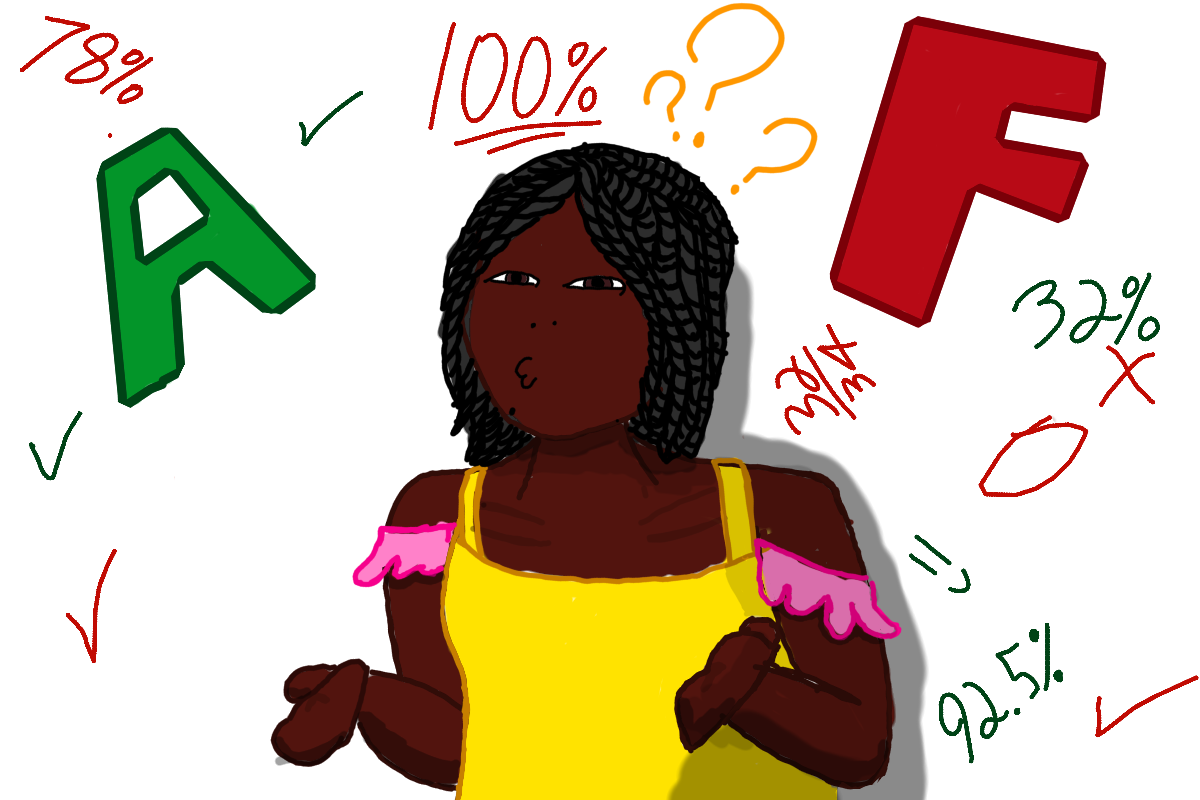Most people at HSMSE would agree that the students here are very focused on grades. We all know the feeling of not doing well on a test or getting a bad grade on an assignment. Grades play a major part in my mood on a specific day. They cause a ton of unneeded stress associated with school and also add a lot of toxicity to our environment. Yet all of our lives, as high school students, are extremely dependent on grades. But why?
Throughout much of history, grades didn’t exist—students were motivated to do well in school because the skills would help them in the future. Many schools used written evaluations instead of number grades to discuss a student’s academic strengths and weaknesses. Grading was first popularized in the late 1700s at Yale University as a way for them to classify students into one of four broad groups: Optimi, second Optimi, Inferiores, and Perjores—meaning best, second best, less good, and worse. These groups displayed a final ranking of how well students performed through all four years of school. Over time, as education systems grew larger and colleges sought standardized ways to compare students, the A–F grading scale became increasingly common.
Now, grades have gotten extremely specific, and many students perceive a huge difference between grades that are even just one point apart. But why should a student getting one question wrong on a test or a homework matter? Grades have gotten more and more specific to individual assignments, and missing one assignment or failing just one test can have a huge effect. In reality, this difference means little to nothing about a student’s knowledge of a subject. Additionally, when a student feels that they are bad at a subject for getting a question wrong, it can make them more afraid to ask questions in the future and a decline in academic integrity, which is the opposite of what school should be.
Many countries approach grading differently. In Finland, for example, students receive little to no formal grades until high school, focusing instead on personal feedback and skill development. Other countries, such as New Zealand, use competency-based assessments rather than letter grades. These alternative systems aim to reduce stress and encourage genuine learning. Yet, the U.S. remains deeply invested in its traditional grading model. This is likely due to a high pressure in high school to display a student’s grades to colleges. There is less of an emphasis on ensuring that students understand the material and more focus on traditional grades that are easy for colleges to interpret—though they have much less meaning.
While grades are supposed to define how good a student is, there has never been a standardized way for teachers to assign grades. Even within our school, some teachers grade much more strictly than others, use a different rubric, or incorporate different amounts of extra credit. When grading means something totally different for different teachers and the same effort in two different classes results in two very different grades, the reliability of the system starts to break down. This raises the question of consistency: How can the system of grading possibly be fair when the grading system is up for so much interpretation?
Grades add a lot of additional stress to students’ lives and, though they can be helpful for displaying a student’s knowledge on a specific topic, are not a great way to measure students overall. I believe that the rigid grading system that most schools have today should be replaced by a more meaningful way to measure student knowledge, and that within the current system, emphasis should be placed more on how motivated students are and how much they want to learn than on how well a student does on an assignment. Competency-based systems, as well as more focus on individual student ability, help to lower the importance and pressure on students that come with such a strict grading system, and make students more creative and willing to learn.
























